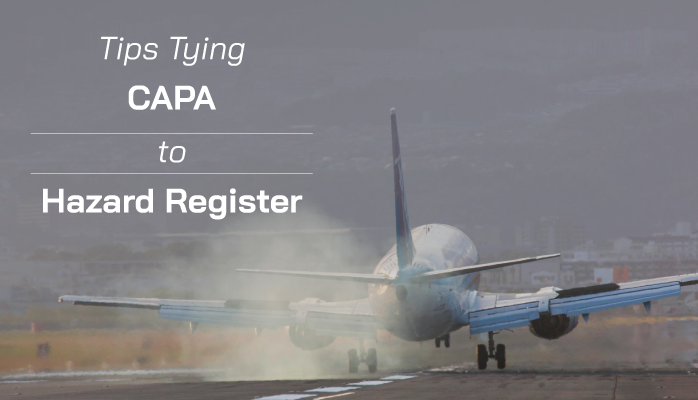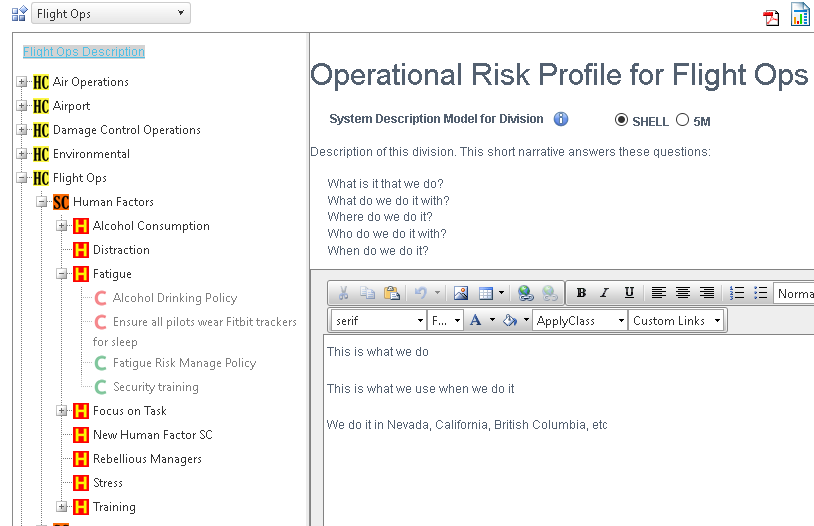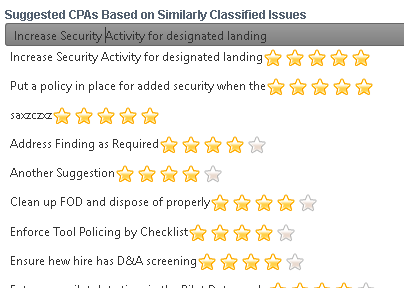All Aviation Safety Managers Need Tips Using Hazard Registers

A hazard register is a common requirement that aviation regulatory authorities review when they audit a Phase 3 or Phase 4 aviation safety management system (SMS).
I frequently talk to aviation service providers that keep their Hazard Register in Excel format. They say they "review" it every year, but other than the obligatory once-over, I seriously doubt they are capitalizing on the value a hazard register can offer.
Besides being a one-stop shop for reviewing operational hazards, the hazard register is an under-utilized safety promotion tool. Front-line employees are interacting with these hazards. As they detect uncontrolled hazards, these employees are responsible for reporting potential safety concerns related to these hazards. In short, both line-level employees and management must remain vigilant for uncontrolled hazards and react appropriately.
Related Aviation Hazard Articles
- Difference Between Hazards, Risks & Control Measures in Aviation SMS
- How to Identify Hazards and Assess Risks in Aviation SMS - With Free Resources
- Relationship Between a Hazard and Risk Occurrence in Safety Management
I seriously doubt accountable executives and safety teams lose sleep over their hazard register. What most interests safety managers are corrective actions and preventive actions, also called:
- Corrective Preventive Action or CPA;
- CAPA (short for corrective action and preventive action);
- Corrective action (by itself, but meaning the same to the user); and
- Preventive action.
What I'd like to show you is a couple of techniques to integrate your corrective actions and preventive actions into your hazard register. These techniques will save time and definitely save your company pain when it comes to assigning the corrective actions and preventive actions (CAPA) to a reported:
- Accident;
- Incident; or
- Irregularity.
Finding Corrective Action Preventive Actions' Low Hanging Fruit
It is not my intention to teach aviation safety concepts, so don't beat me up if I neglect to be painstakingly thorough. My intention is to share some ideas that may spark your interest and hopefully save you time and improve your aviation SMS implementation.
We won't get into laborious topics, like Bowtie Analysis, but we may touch this briefly in the end to show you a vision. Let's start with the low-hanging fruit by showing you how to integrate your corrective actions and preventive actions into your hazard register.
Let's not box ourselves in by using only the aviation SMS hazard register. The concept we discuss will work with every classification scheme that your aviation safety database is capable of using, including:
- Types of reported issues;
- Human factors;
- Root causes;
- Policies and procedures; and
- Affected parts (aircraft or vehicle).
For our discussion, we'll focus on the hazard register with a structure such as:
- Hazard Category (HC);
- Hazard Subcategory (SC); and
- Hazard (H).
See the image for a visual representation. The "C" below the hazards represents the control measures, of which there should be three types:
- Preventive;
- Detective; and
- Corrective.

Related Aviation Control Measure Articles
- What Is a Risk Control in Aviation SMS: Meaning, Purpose, Application
- How to Implement Effective Control Measures
- How to Evaluate Risk Controls and Risk to Aviation SMS Implementations
Simplified Aviation Risk Management Workflow
To provide you with how to use this tactic, let us map a simplified risk management workflow so we are all on the same page. "Safety manager" listed below can be used interchangeably with "safety officer" or even "safety committee," depending on your organization.
- User reports potential hazard or safety concern;
- Safety manager is notified of reported hazard;
- Safety manager reviews safety report details;
- Safety manager composes initial risk statement;
- Safety manager determines potential probability and severity (risk assessment prioritizing risk management efforts);
- Safety manager classifies issue based on accumulated knowledge;
- Safety manager passes issue to Dept Head for treatment.
Department Head Manages Corrective Actions Preventive Actions
Up until now, the main actors have been the reporter and the safety manager. Safety managers act as the gatekeepers or facilitators of aviation SMS. When safety issues come into the system, safety managers route safety issues to the appropriate department that owns the affected process.
Department Heads should be notified that they are in charge of a "reported safety issue." Their first steps are to understand the nature of the safety issue and if necessary, to "put out the fire," or "stop the bleeding." These are initial mitigating actions.
Putting out the fire can be seen as implementing the "Short Term Corrective Action or Preventive Action." These short-term control measures will commonly be "corrective" in nature, but I can easily make the case for implementing a "detective" control measure to monitor the situation.
Long-term corrective actions and preventive actions may be the sole province of the department head, or they may be the responsibility of the safety committee. I have seen both workflows.
Now, that we have laid the framework for our simplified risk management scenario, let's see how to really get value from your SMS' data management capabilities.
Related Aviation Risk Management Articles
- How to Practice Reactive, Proactive, and Predictive Risk Management in Aviation SMS
- 8 Stages of Safety Events in Aviation Risk Management Programs
- 3 Best Aviation SMS Risk Management Tools: Pros and Cons of Each
Tying Corrective Actions and Preventive Actions List to Hazard Identification

When the safety manager classified the reported safety issue, he was certainly helping the Responsible Manager treat the issue. How?
Based on which classifications were assigned to the safety issue, the Responsible Manager should have a list of control measures or previous corrective actions that were used to treat similarly classified safety issues in the past.
In the perfect world, the Responsible Manager would also have the perceived effectiveness of the "suggested" corrective actions. The effectiveness of a completed CPA is extremely valuable information. Knowing whether a CPA was effective in the past serves to:
- Encourage repeat behavior for effective actions; and
- Discourage repeating behaviors that simply don't work.
Caveat of Hazard Registers in Excel Spreadsheets
Excel spreadsheets are not databases.
EASA no longer permits aviation service providers to store mandatory hazard reports only in a spreadsheet. You need a database. Databases are more powerful and suited for the task of complex data storage. Databases offer
- real-time reports;
- easy integration with third-party software applications; and
- can associate mountains of data across highly distributed organizations.
To put it simply, it will prove futile trying to incorporate this "pro tip" of managing hazard registers and CPAs in an Excel spreadsheet. You will need a database. If you are a competitor to SMS Pro, feel free to use this strategy. Chances are that you already have some of our other features.
Reviewing Control Measures - Another Part of Your SMS
These CPAs used during the reactive risk management process are essential "control measures" when they are associated with your hazard register. These control measures are more apt to be at the front of everyone's minds whenever they are dealing with daily safety issues, especially when they are presented in the above format for treating reported issues.
Evaluating the effectiveness of control measures becomes more meaningful when they are being evaluated every time a Responsible Manager accepts or rejects the performance of corrective preventive action. I believe in keeping things simple and having a flexible workflow for both simple and complex operations.
Not only should control measures be evaluated by Responsible Managers after the completion of corrective preventive action, but I can also argue the case for safety committees to perform a similar exercise on a quarterly basis. For this to work, you again will need an aviation SMS database program that can provide an interactive report of all the corrective preventive actions.
Related Aviation SMS Database Articles
- Pros and Cons of In-House SMS Database and Off-the-Shelf-Solutions (COTS)
- How to Choose the Best Aviation Safety Database Software
- How Spreadsheets Not EASA Compliant Aviation Safety Reporting Database
Final Thoughts - Excel Spreadsheets Are a Nightmare to Manage
I've worked with hundreds of aviation service providers. I groan when I hear the pains of managing their reported safety issues and hazard registers in Excel spreadsheets. They may not have known better in the early years of their SMS implementations. It is probably that some old-school aviation consultant gave them this "spreadsheet gift."
These hazard registers and spreadsheets of reported safety issues are easily imported into professional aviation SMS software tools.
You should ask yourself, what is your time worth?
What do auditors think of your company when you bring out your "toy spreadsheets?"
SMS software really does shine when it comes to managing hazard registers and integrating them with your corrective preventive actions.
If you are performing a Bowtie analysis, I highly recommend integrating your Bowtie tools with both:
- Hazard register; and
- Corrective preventive actions.
Do you need an excellent list of hazards? Here is the best list we have. And it is really good.
SMS Pro Demo Videos
Last updated July 2025.








